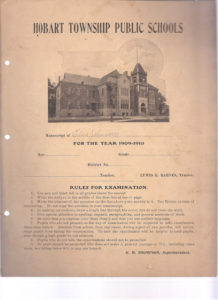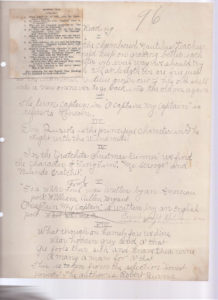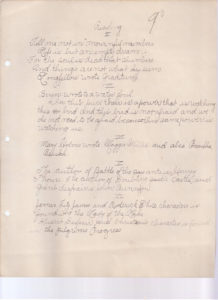Originally published on genealogyatheart.blogspot.com on 6 Sep 2015.
Tests and schools go hand and hand. Lately there has been much parent backlash regarding the number of and amount of time spent on school assessments. The validity and reliability of the assessments are also an issue. Last spring in my state, students were still completing their online state required end of course assessments when the legislature decided that the results couldn’t be used as they had not been normed. Duh! Teachers and administrators had been complaining about how unfair the tests were but no one listened until the 12th hour.
Another major educational concern is the use of a common core curriculum. States rights advocates complain about Federal meddling. Some educators complain that the common core doesn’t address what’s most important.
Personally, I’m over all of the testing requirements – it’s way too much and I wish politicians could witness the stress their mandates are causing children. I’m glad I never had the pressure at 8 years old that today’s kids have. For the past 15 years in Florida, if a child didn’t score high enough on a standardized test administered in the spring, the student can be retained even though the child had performed adequately all year in class. For many students, the test was the first time he/she ever was given a test formatted in that particular way so the unfairness of the retention is even greater.
I truly am an advocate of a nationwide curriculum and testing program with regional elements added. Genealogists know that families don’t stay in one place for long and transitioning for children is hard enough without having to adapt to a new curriculum. I’m not saying every child in America should be on the same page in the same book every day. Children learn at different rates; humans are not automated and differentiation is necessary and beneficial. Comparing learning, however, does need to be uniform. When I first started teaching in Florida I was appalled at the standardized test questions that asked about tobogganing and ice skating. Seriously, most of my students had no experience with northern winter weather. How unfair!
My husband’s grandmother, Elsie Wilhelmina Johnson attended school in Lake County, Indiana in the first decade of the 20th century. A first generation American with Swedish spoken at home, I am amazed at how well she performed academically. We have copies of her graduation exams and they were tough!. Take a look at the testing rules:

Rule 10 states that a student needs a 75% on the exam AND classwork above 60% to pass for the year. A 60% today equates to a grade of F so in Elsie’s day, good test takers who slacked throughout the school year could pass. We had that problem in middle school and the way our district fixed it was that students had to gain a minimum of 2 points a semester, which at the lowest, is two D’s. Prior to the change we had darlings getting an A first grading period and then failing the next 3 grading periods. The old rule was a student must earn 4 points a year in a subject to pass and the A equaled 4 points. Our rule change eliminated slackers.
Elsie’s exams were for completion of the 8th grade which was the highest grade she attended. High School was available through 12th grade but was not mandatory. Exams, though, were state mandated with the final test question “to be determined” by the local district. Wish we still did that today! This would allow for local differences yet still give educators a better idea of how a child had progressed in comparison with a broader group.
When I first began to teach I was a reading teacher so Elsie’s reading tests are of particular interest to me. My husband and I attended school in the 1970’s in the same district as Elsie and we did not read the selections on her exam until high school. In Florida, only Don Quxiote is still read and that is at the high school level:

Elsie’s reading test was in two parts. Here’s the 2nd section:

I particularly like how the reading selections crossed curriculum areas, Pilgrim’s Progress with US History, Burn’s with science and Longfellow with philosophy. In that case, the crafty teacher could have easily taught reading through the other core classes.
It appears that Elsie had one teacher all day who taught all lessons. WOW! This would certainly not occur today unless it was through a homeschool environment. Teachers are prohibited from having to develop more than 3 different plans for levels or classes.
Think also of how much time was saved in not having students transition from room to room. Five minutes passing time for 7 periods would save 30 minutes a day!
Next time we’ll look at Elsie’s math…
